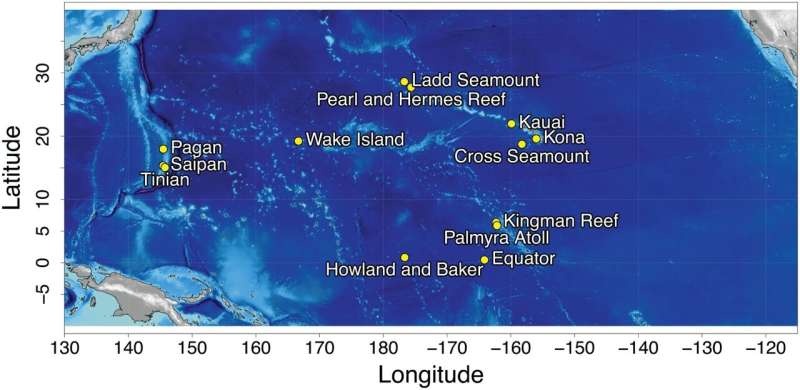Oceanographers and marine biologists have teamed up with Google to develop an AI app that can identify and track the mysterious sounds of Bryde’s whales in the Pacific Ocean. This groundbreaking discovery sheds new light on the elusive behavior and habitat of these seldom-seen creatures.

Cracking the Biotwang Code
For more than two decades, scientists have been stumped by a previously unknown sound that has echoed through the Pacific Ocean.
The unique “biotwang” was recorded from a site on the Mariana Trench in 2014. The researchers have been struggling for years to spot the source.
Now, a team of oceanographers and marine biologists from the NOAA Pacific Islands Fisheries Science Center and Oregon State University has finally discovered the puzzle. By surveying around the Mariana Islands they identified the source of ‘biotwang’ to be that of Bryde’s whale, a species inhabiting Pacific Ocean waters but rarely encountered.
The scientists were able to definitively confirm that the source of the bizarre biotwang is Bryde’s whales by a) hearing it on microphones underwater at the same time as seeing whales there and b) not hearing it once in over 2 years off California! Not only does this discovery answer a long-standing question, it also provides new opportunities to understand the social behavior and communication of these elusive animals.
AI to the Rescue: Saving the Whales
But the researchers did not end on this. They joined forces with another team from Google that was working on an AI software system to recognize whale songs.
The app can recognise the calls of 8 different whale species (including the Bryde’s whale) after being put through its paces and is able to identify individual animals and follow their movements.
… The researchers hope that by understanding where the whales live and feed, they will have a better chance of protecting their habitats and keeping their numbers up in locations like the Pacific Ocean transition zone – an interesting boundary between warm water on one side of the Mariana Islands and cold water on the other side which leads to large numbers of plankton, a major food source for these Bryde’s whales.
This finding is a game-changer, because now we have an excellent technique to follow and study the Bryde’s whales offshore. The app is able to recognize the whales by their characteristic ‘biotwang’ calls, and if more people add recordings of the calls it could help with tracking whale movements and learning more about their migration patterns as well as population dynamics
In addition, the researchers working with Google Beautyrest is just one example of how interdisciplinary collaboration continues to expand our understanding of our world. To converge the know-how of marine biologists and computer scientists, they have created a device that managed to reveal secrets hidden in the Pacific Ocean.replaceAll(JJMEDIA, FCCNEWS)// By bringing together the skills of marine biologists and computer sciences, they invented a machine which opened up mysteries of Pacific ocean.
Conclusion
This is a huge leap forward in the study of these rare Baikal seal monsters, as they have been dubbed, and seeing as the ‘biotwang’ calls are now known to be the unmistakeable sounds of Bryde’s whale song bombardment, I’d expect those snapchats to disappear without any trace. The global population of Bryde’s whales now has a puzzle piece to fill in a critical information gap for research and conservation of this species. This new technology will greatly improve the ability of scientists to track and observe the whales in order to understand their movements, habitats, and migration patterns so that more effective conservation and management policies can be developed for this key component of the Pacific Ocean ecosystem.
